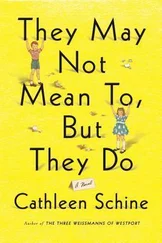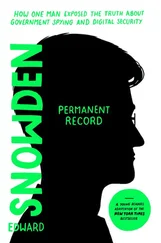I mentioned that I mainly take my corpus of writing problems from student papers. Almost all the same things can be seen in the writing world at large. Not so much in books and newspaper and magazine articles, but rather in e-mails, blog posts, comments, and other online documents. These texts are not selected or processed by an editor (and are for the most part not the work of professionals) and thus display in a clear light the way we write now.
Taken collectively, this collection of problems and errors is kind of strange. I think of it as a giant blob of writing woe, slowly shifting as the years pass. To be sure, there have been some constants over the past two decades. When I started teaching, I wasn’t even familiar with the term comma splice . But then I was quickly confronted with innumerable variations of sentences like:
It promises to be a good game, we plan to get there early.
A colleague taught me what this was called. Knowing the name was somehow comforting; at least it gave me something to scrawl on papers. I have scrawled it many times: comma splices, like the Dude in The Big Lebowski , abide. There are variations over time, however, and one recent favorite is what I call the HCS (for “however comma splice”):
Steven Spielberg’s recent films have been box-office disappointments, however his next release is expected to do well.
The person was using however as a conjunction, more or less synonymous with but . For all I know, this will one day be acceptable, but it isn’t now — and so it is entry II.B.4.d. in How to Not Write Bad.
I started seeing the HCS and a lot of other new bad-writing phenomena ten or twelve years ago. Surprise! That was about the time that online writing started to take off: going beyond e-mail to texts, blog posts, Facebook status updates, tweets, product comments, etc. In a lot of ways, this textual revolution is quite cool; for one thing, it’s picked up many people by the napes of their necks and deposited them into the universe of writers. Certainly, it represents a huge positive change from the time not that long ago, when, other than a postcard here and there and the occasional thank-you note, most people didn’t write much of anything at all. (Reports of letter writing in the pre-Internet era are greatly exaggerated.)
Nor do I agree with the complaint you’ll find if you read more than a couple of op-ed pieces about the effect of this online culture on writing. That’s the charge that smiley faces, “LOL”-type abbreviations, and terms like diss or phat are rampant in young people’s prose. I think this is whack. (I realize all my attempts at slang are at least ten years out of date. My bad.) In fact, I don’t remember encountering a single example in all my years of grading, except for a handful of ironic parries. Students realize that this kind of thing is in the wrong register for a college assignment.
But their writing does show an online influence in subtler ways. Writing for the computer is, for some reason, more like talking than writing for print is. That lends it a welcome freshness and naturalness. But there’s a downside. Just as our spoken words disappear into the very air as soon as we utter then, it somehow seems that words on the computer screen aren’t as final as they are on a piece of paper. One has a sense that the text is somehow provisional, that it will always be possible to make more changes. My friend and fellow teacher Devin Harner has said that something — a certain level of paying attention? — is lost when documents aren’t printed out. I think he’s on to something.
The general wordiness that characterizes so much writing today has got to be related to the incredible ease of using a keyboard to create shapely and professional-looking paragraphs. Back in the days when you had to scratch out each character with a quill pen (or even pound a manual typewriter), words were dearer and therefore were parceled out more judiciously. Now, after some stream-of-conscious keyboarding, you’ve got something that looks impressive. But it isn’t. Paradoxically, it takes more effort to be concise than to be prolix, and people are (or think themselves to be) so pressed for time nowadays. As the philosopher Pascal once wisely wrote, “I would have written a shorter letter, but I did not have the time.”
Don’t worry about the ever-shifting sands of grammar and usage. Learning how to not write bad will, for one thing, attune your inner ear to these changes. Not-bad writing will help you hold on to your readers’ attention, clearly communicate your meaning to them, and sometimes even convince them of your point of view. Without a doubt, it will serve to clarify your own thinking. And if you so desire, it will place you firmly on the road to writing well.
*Full marks, by the way, if you noticed that in this sentence I broke Strunk and White’s colon rule.
PART I.How to Not Write Bad: The One-Word Version
Read.
That one word refers to two things. The first is a big-picture deal: about the least quick of all possible fixes. But hear me out for a minute. Almost without exception, good writers read widely and frequently. By osmosis, they learn from the reading an incalculable amount about vocabulary, spelling, punctuation, style, rhythm, tone, and other crucial writing matters. They also pick up general random information, which also turns out to be important if you want to be a good, or even not-bad, writer.
Another college writing teacher, who calls himself “Professor X” and has written a book called In the Basement of the Ivory Tower: Confessions of an Accidental Academic , observes:
I have come to think that the twist ingredients in the mysterious mix that makes a good writer may be (1) having read enough throughout a lifetime to have internalized the rhythms of the written word, and (2) refining the ability to mimic those rhythms.
He may be exaggerating the point. But he does have a point. Sometimes, when encountering an article or essay from a student who makes many spelling and punctuation mistakes, who uses words incorrectly, whose sentences meander in an awkward and ungainly fashion, I want to write on the paper: “Have read a lot!” Besides being a seriously weird tense (present perfect imperative?), that sentence represents a physical impossibility, outside of time-travel movies. So I don’t write it. What I do try to tell all students is that if they want to be good writers, they should start reading as much as they can, starting now. And they should read all kinds of things.
Up until about ten years ago, I could leave it at that, maybe throwing in a great William Faulkner quote indicating that they need not confine themselves to the great works of Western literature: “Read, read, read. Read everything — trash, classics, good and bad, and see how they do it. Just like a carpenter who works as an apprentice and studies the master. Read! You’ll absorb it.”
But things have changed. People nowadays read and write huge amounts of online stuff — texts, tweets, e-mails, blog posts, and so forth. As I mentioned in the introduction, I don’t think there is anything especially wrong with this, and the composition end of it, at least, has led to a lot more people actually writing a lot more. But clearly, as far as reading goes, this online textuality doesn’t have the Faulknerian effect. The material one is exposed to is too off-the-cuff and unilateral. For some reason, the stuff that helps your own writing has to have some measure of the traditional structure. It can be in print or online, can be any kind of book or any kind of article, but it seems to need to go through the old-fashioned pipeline. That is, selected and processed by an editor, and then “published.”
Читать дальше












